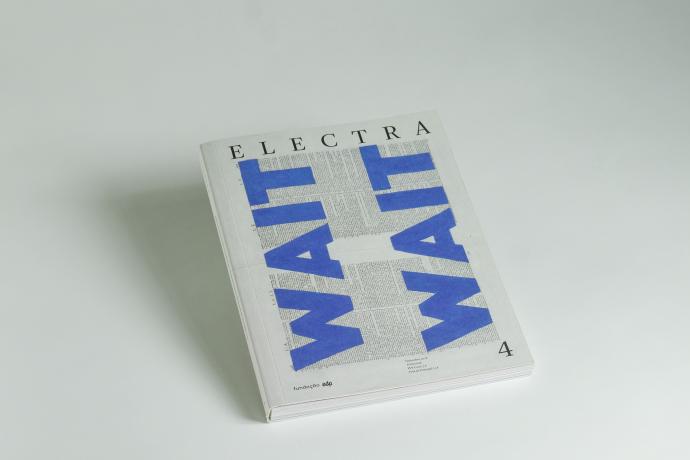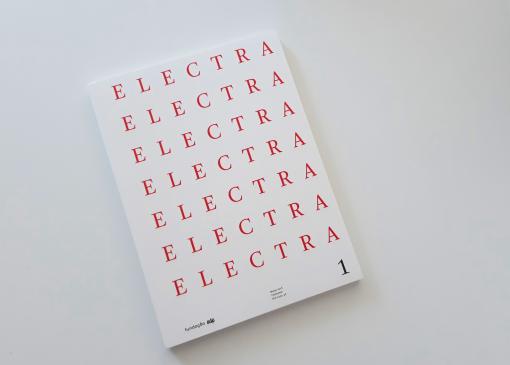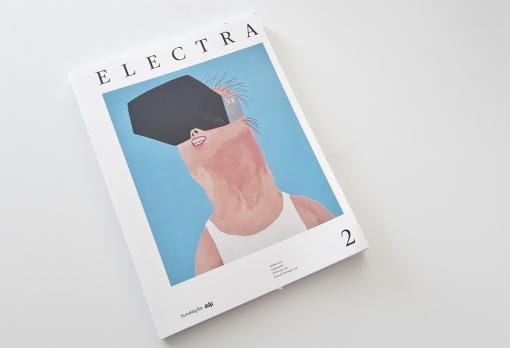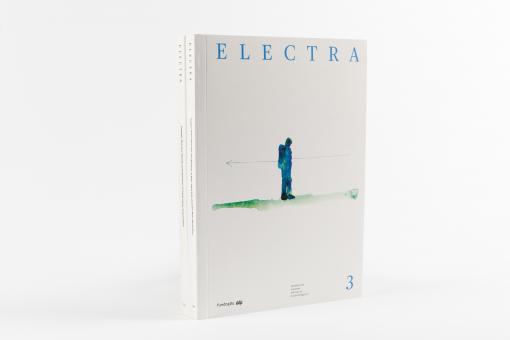Editor
Fundação EDP
Year
2018
Price
9.00€
(Availabe in MAAT store, bookshops, magazine stands and online)

Sinopsis
The crisis and the uncertainties of journalism, the good and the fake news, the new media, social networks and freedom of speech, populism and the irreversible decline of traditional media are topics in highlight in Electra 4.
In a set of eight original articles, there is a multifaceted analysis of the current mediatic scenario – its risks and challenges -, which counts on the contributions of Barbie Zelizer, communication teacher and director at the Center for Media at Risk at Pennsylvania University; Carla Baptista, teacher at the Department of Communication Sciences at FCSH–UNL (University of Lisbon); Jacinto Godinho, journalist and teacher at the Department of Communication Sciences at UNL (University of Lisbon); José Luis Pardo, philosophy professor at the Complutense University of Madrid; Joshua Benton, founder and director of the Nieman Journalism Lab of Harvard University – interviewed in this edition; and Yves Citton, professor of literature and media at the University of Paris.
The recent proclamation of Israel as a Nation-State of the Jewish people is the topic of the «Diagonal» section. The Italian philosopher Donatella Di Cesare, and the French author of literary studies, Éric Marty, both with work and public intervention in Israel, judaism and the jewish issue, comment on the law approved in July 2018, taking different paths as far as its sense, reach and consequences go.
An interview to Alexander Kluge, an exceptional personality of the German culture; Einstein’s years of study and training in an article by the historian Christian Bracco, author of the recent book Quand Albert devient Einstein (When Albert became Einstein); the Tratactus Logico-Philosophicus of Wittgenstein; a description of the city of Berlin, made by the German poet and essayist Durs Grünbein, also find their place in this edition.
The author of the portfolio is William Kentridge. It is a work for Electra that has as starting point the notes written in red, which in religious books, accompany the liturgical text that teaches how to pray.
In a set of eight original articles, there is a multifaceted analysis of the current mediatic scenario – its risks and challenges -, which counts on the contributions of Barbie Zelizer, communication teacher and director at the Center for Media at Risk at Pennsylvania University; Carla Baptista, teacher at the Department of Communication Sciences at FCSH–UNL (University of Lisbon); Jacinto Godinho, journalist and teacher at the Department of Communication Sciences at UNL (University of Lisbon); José Luis Pardo, philosophy professor at the Complutense University of Madrid; Joshua Benton, founder and director of the Nieman Journalism Lab of Harvard University – interviewed in this edition; and Yves Citton, professor of literature and media at the University of Paris.
The recent proclamation of Israel as a Nation-State of the Jewish people is the topic of the «Diagonal» section. The Italian philosopher Donatella Di Cesare, and the French author of literary studies, Éric Marty, both with work and public intervention in Israel, judaism and the jewish issue, comment on the law approved in July 2018, taking different paths as far as its sense, reach and consequences go.
An interview to Alexander Kluge, an exceptional personality of the German culture; Einstein’s years of study and training in an article by the historian Christian Bracco, author of the recent book Quand Albert devient Einstein (When Albert became Einstein); the Tratactus Logico-Philosophicus of Wittgenstein; a description of the city of Berlin, made by the German poet and essayist Durs Grünbein, also find their place in this edition.
The author of the portfolio is William Kentridge. It is a work for Electra that has as starting point the notes written in red, which in religious books, accompany the liturgical text that teaches how to pray.







